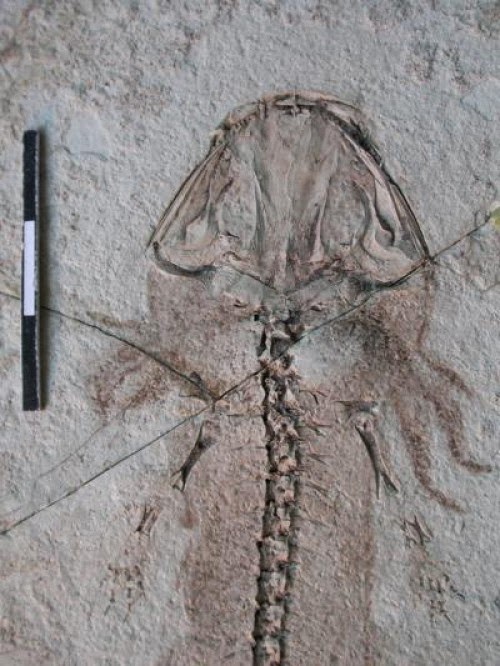
Over the last two decades, huge numbers of fossils have been collected from the western Liaoning Province and adjacent parts of northeastern China, including exceptionally preserved feathered dinosaurs, early birds, and mammals. Most of these specimens are from the Cretaceous Period, including the famous Jehol Biota.
This fossil assemblage, newly named the Daohugou Biota after a village near one of the major localities in Inner Mongolia, China, dates from a time when many important vertebrate groups, including our own group, mammals, were undergoing evolutionary diversification. The Daohugou Biota makes an immense contribution to our understanding of vertebrate evolution during this period, with such notable creatures as the oldest known gliding mammal, another early mammal that may have swum with a beaver-like tail, the oldest dinosaurs preserved with feathers, and a pterosaur that represents an important transitional form between two major groups. As described by Dr. Corwin Sullivan, lead author of the study, “The Daohugou Biota gives us a look at a rarely glimpsed side of the Middle to Late Jurassic — not a parade of galumphing giants, but an assemblage of quirky little creatures like feathered dinosaurs, pterosaurs with ‘advanced’ heads on ‘primitive’ bodies, and the Mesozoic equivalent of a flying squirrel.”
Almost more impressive than the diversity of the biota is the preservation of many of the vertebrate specimens, including complete or nearly-complete skeletons associated with preserved soft tissues such as feathers, fur, skin or even, in some of the salamanders, external gills. Dr Yuan Wang, co-author of the study, explained, “The Daohugou amphibians are crucially important in the study of the phylogeny and early radiation of modern amphibian groups.”
Dr. Paul Barrett, dinosaur researcher at the Natural History Museum, London, who was not involved with the study, commented, “Daohugou is proving to be one of the key sites for understanding the evolution of feathered dinosaurs, early mammals, and flying reptiles, due largely to the fantastic levels of preservation. Many of the fossils are stunning and offer vast amounts of information. There are only a handful of similar sites elsewhere in the world and this article represents the first comprehensive attempt to draw all of the relevant information together into a single benchmark paper.” Because the Daohugou Biota and the much better studied Jehol Biota are similar in preservational mode and geographic location, but separated by tens of millions of years, they give palaeontologists an outstanding, even unique, opportunity to study changes in the fauna of this region over a significant span of geological time and an important period in vertebrate evolution. As Dr. Sullivan further remarked, “The Cretaceous feathered dinosaurs of northeastern China have been astonishing palaeontologists and the public for almost two decades now, and the Daohugou Biota preserves their Jurassic counterparts in the same region. As prequels go, it’s pretty exciting.”
Note : The above story is based on materials provided by Society of Vertebrate Paleontology.










